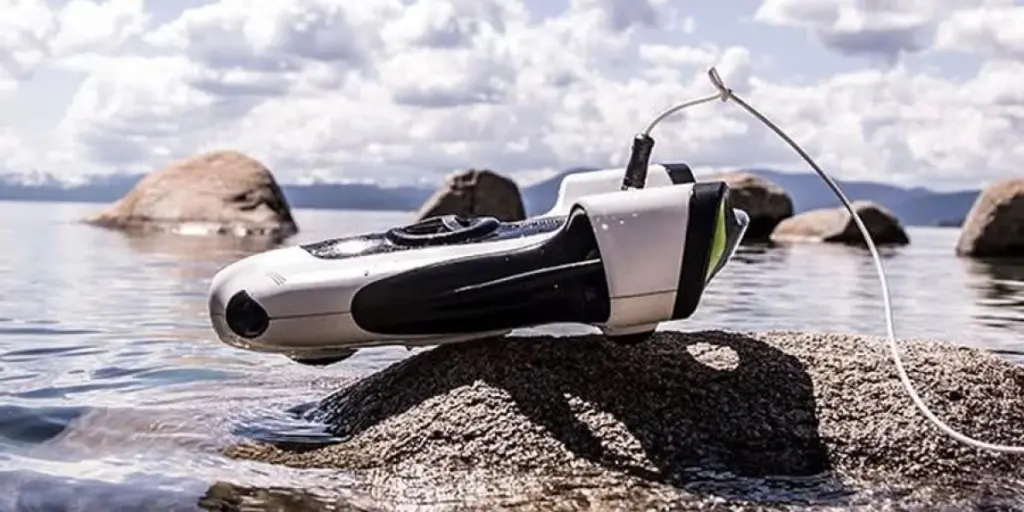In 2024, underwater drones have emerged as pivotal tools in unlocking the mysteries of the deep sea, revolutionizing fields from marine research to recreational exploration. These sophisticated devices, equipped with advanced cameras and sensors, are opening new frontiers in oceanography, enabling unprecedented studies of marine life and ecosystems. They also cater to adventure seekers, offering an immersive glimpse into the underwater world without the need for diving gear. For industries such as maritime surveillance and infrastructure inspection, these drones are indispensable for their efficiency and safety enhancements. As technology continues to evolve, underwater drones are becoming more accessible, versatile, and essential for a wide range of applications, marking a significant leap in our interaction with the ocean’s depths.
Table of Contents:
1. Market overview
2. Things to consider when selecting products
3. Best products and their features
1. Market overview
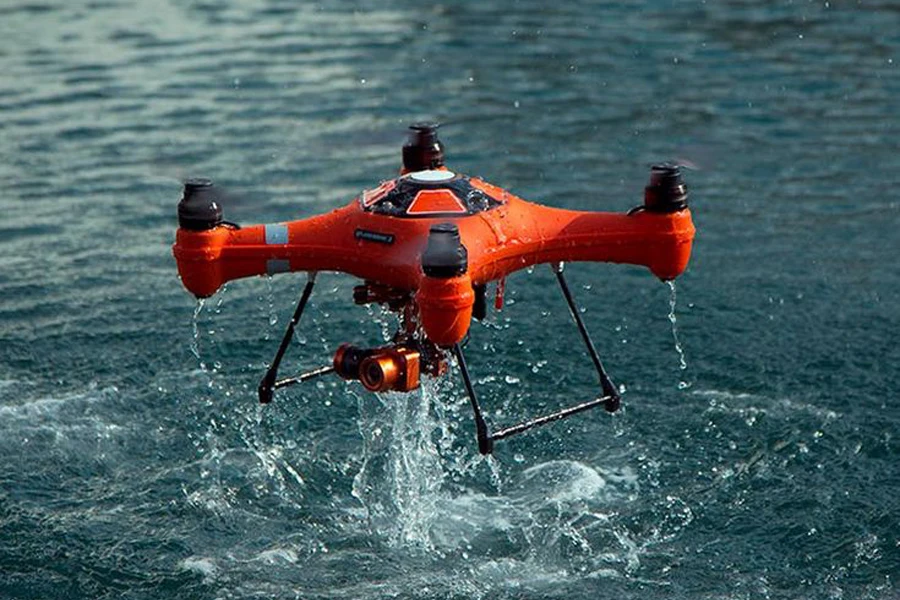
The rise of underwater drones: The underwater drone market is experiencing a significant surge in growth. Valued at $3.6 billion in 2021, it is projected to reach $15.4 billion by 2031, growing at a CAGR of 15.9% from 2022 to 2031, according to Allied Market Research. This growth is driven by technological advancements in unmanned underwater vehicles, such as high-resolution cameras and highly sensitive sonar, which reduce inspection timelines and open new opportunities in the market.
Dominating players and market shares: The underwater drone market is competitive, with key players including The Boeing Company, Lockheed Martin Corporation, Bluefin Robotics, Saab Seaeye Ltd, and Teledyne Marine Group. These companies are engaging in strategic alliances, expansions, and product launches to strengthen their market position. For instance, General Dynamics Mission Systems, the parent company of Bluefin Robotics, opened a new UUV manufacturing and assembly facility, indicating the growing emphasis on underwater drone development.
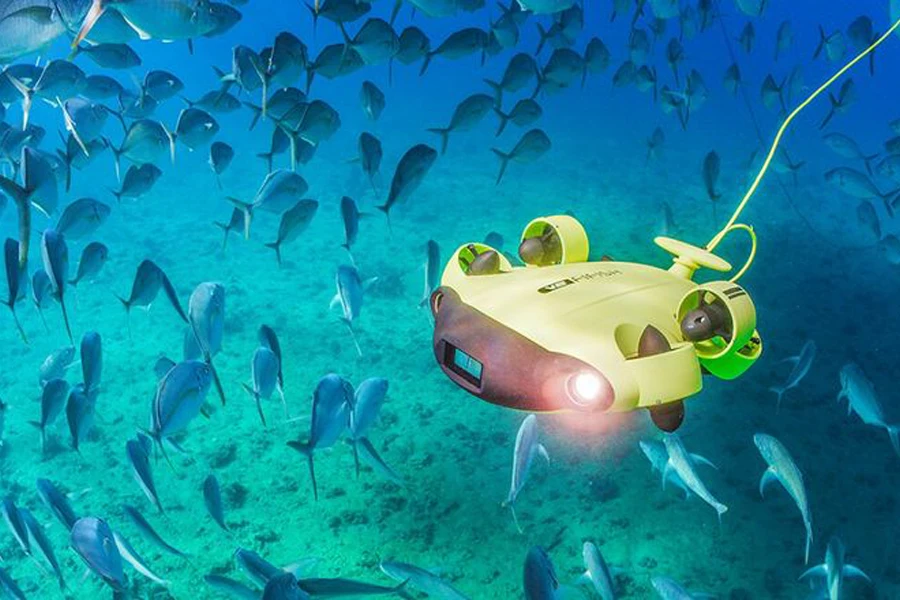
Technological advancements and impact: The market is witnessing a trend in expanding distribution channels, both offline and online, making underwater drones more accessible. Key trends shaping the market include the demand for UV-resistant textures, lifelike drone designs, and advancements in blade and coloration technology. Additionally, the growing influence of pet owners on market demand is leading to the development of pet-friendly underwater drones with strong drainage systems and non-toxic materials.
2. Things to consider when selecting products
When selecting an underwater drone, it’s important to consider its intended use, battery life, communication technology, camera quality, and operational depth and stability. Each factor plays a significant role in the drone’s performance and suitability for specific tasks.
Selecting the right underwater drone involves careful consideration of several key factors:
Purpose and application: The intended use of an underwater drone greatly influences its design and features. For scientific research, drones are often equipped with advanced sensors and high-resolution cameras to collect detailed data. Recreational photography drones focus on user-friendly interfaces and robust camera systems. Industrial inspection drones, on the other hand, require durability and specialized equipment to withstand challenging environments, as highlighted by sources like Flying Magazine and Digital Camera World.
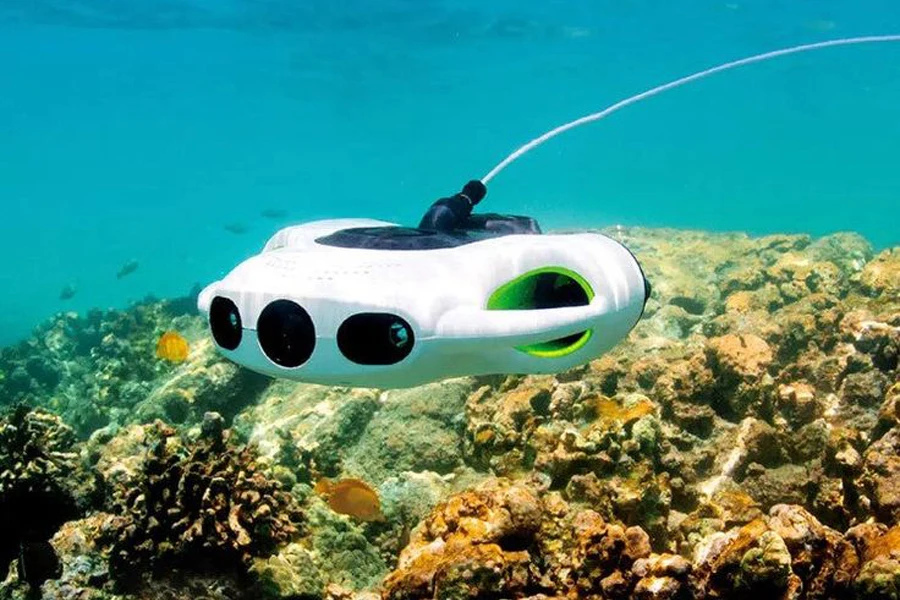
Battery life and autonomy: Extended battery life is crucial for long missions, allowing for uninterrupted operation. According to Aeromotus, drones like the Nemo Underwater Drone offer up to 180 minutes of battery life, which is ideal for lengthy explorations. Autonomy in terms of intelligent navigation and operation is also a vital aspect, allowing for more precise and efficient data collection or photography.
Tethered vs. Wireless technology: The choice between tethered and wireless technology impacts the drone’s range and flexibility. Tethered drones, as explained by Kate Backdrop, offer reliable communication and power supply but limit mobility. Wireless drones provide greater freedom of movement but may face challenges with signal transmission and battery dependency.
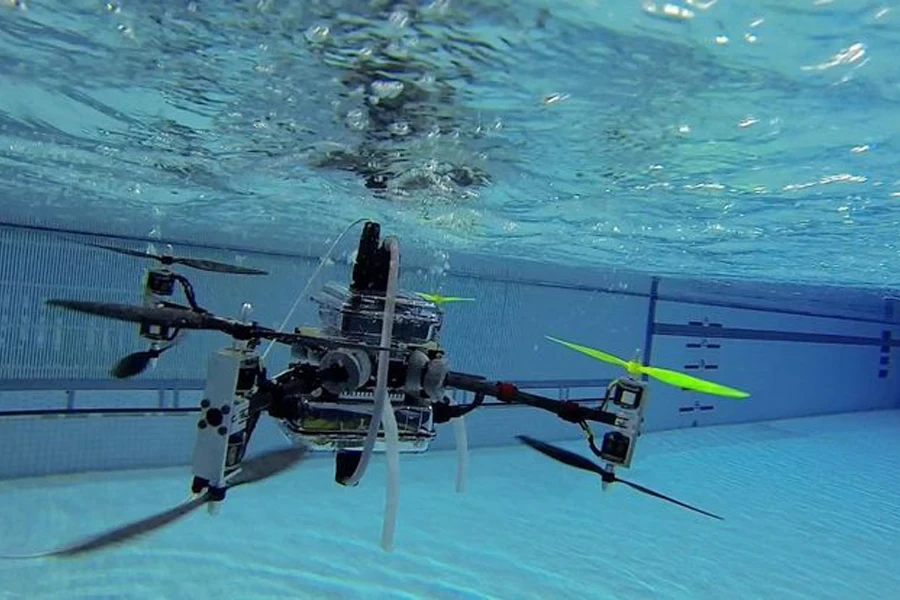
Camera quality and lighting: The quality of the camera is a decisive factor for underwater drones. High-resolution cameras, like the 4K cameras found in models such as the Fifish V6, provide clear and detailed images crucial for both professional and recreational purposes. Adequate lighting is also essential for underwater visibility, with drones like the Chasing Dory featuring built-in LED lights to illuminate dark underwater environments.
Depth capability and stability: Maximum dive depth and stability are critical for operating in various water conditions. Drones like the PowerVision PowerRay Wizard, capable of diving up to 30 meters, are suitable for a range of underwater activities. Stability ensures smooth operation and clear imaging, even in strong currents or challenging underwater topographies.
3. Best products and their features
The underwater drone market in 2024 boasts an impressive array of models, each with unique features catering to various needs and preferences.
Gladius Mini Underwater Drone: Touted as the best for thorough underwater exploration, the Gladius Mini stands out with its high-quality camera and versatile attachments. According to Flying Magazine, it supports a range of 100 meters and a depth of 100 meters, making it suitable for detailed underwater exploration. The drone’s precise game control remote controller and ±45° adjustable tilt-lock mode enhance its operational efficiency, despite some noted app limitations.
Nemo Underwater Drone: Best suited for long underwater explorations, the Nemo features a detachable C-hyper helix rechargeable battery, offering an extended battery life of 180 minutes. Its compatibility with most VR headsets and real-time imaging capabilities make it a favorite for extended adventures, as highlighted by Flying Magazine. The 2 – 1000 lumen LED lights enhance visibility in dark waters, although additional batteries and the VR headset come at an additional cost.

Fifish V6: The Fifish V6 is ideal for underwater photography and videography, boasting a 166° wide angle and the ability to shoot in 4K Ultra High Definition at 30 fps. Its unique features include a motion sensor headset with a real-time view and a smart controller with various control modes. The Fifish V6 is also equipped with 2 – 2000 lumen LED lights, though it may experience reduced speed in moving water.
Chasing Dory Underwater Drone: This drone is specifically designed for accessibility and ease of use, making it a popular choice for beginners and casual users. Chasing Dory is equipped with a 1080p camera and provides a 15-meter depth capability. It’s small, portable, and controlled via a smartphone app, offering a user-friendly interface. Despite its compact size, it still offers a robust set of features, including built-in LED lights and a 45-degree tilt-lock mode.
PowerVision PowerRay Wizard: Ideal for fishing and underwater photography, the PowerRay Wizard can dive up to 30 meters and is equipped with a 4K UHD camera. It stands out for its innovative features like a sonar fish finder and bait drop line, making it a versatile tool for both recreational and professional users. The drone also offers VR headset compatibility, enhancing the immersive experience of underwater exploration.
Geneinno S2 Portable Sea Scooter: While not a traditional drone, the Geneinno S2 offers a unique experience as a sea scooter. It’s designed for both adults and children, offering a simple and fun way to explore underwater environments. The scooter can reach speeds up to 4.3 km/h and dive up to 30 meters, and it’s compact enough to carry on flights, making it a great choice for travelers.
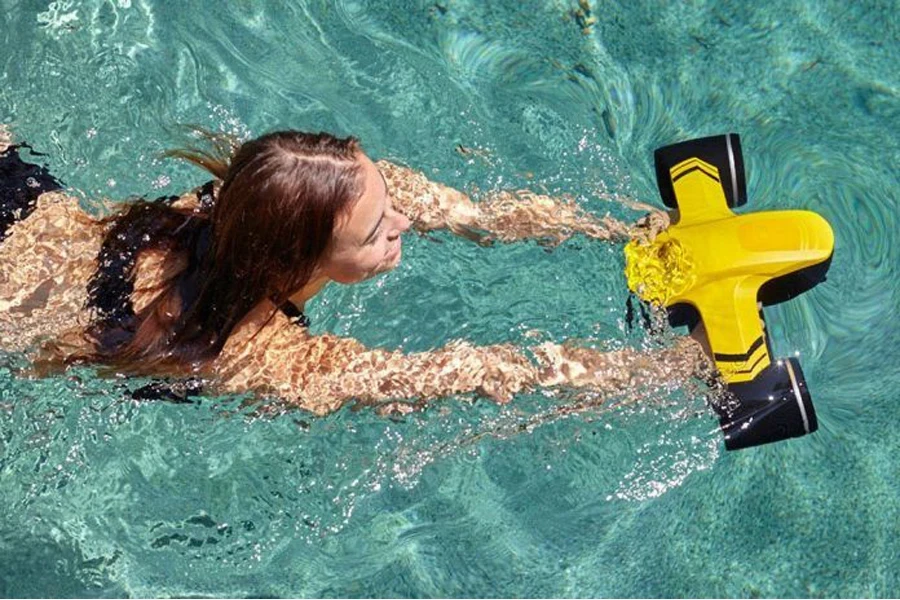
Blueye Pioneer Underwater Drone: Targeting a more professional segment, the Blueye Pioneer is known for its rugged build and exceptional performance in harsh underwater conditions. It offers a depth capability of up to 150 meters and is equipped with powerful LED lights to illuminate the deep ocean. The drone is controlled via a smartphone or tablet, and users can wear VR goggles for a first-person view experience.
ROBOSEA BIKI Underwater Drone: BIKI is the world’s first bionic underwater drone that is also wireless. It is known for its unique fish-like design and ability to maneuver with great agility. Equipped with a 4K camera and able to dive up to 60 meters, BIKI is perfect for capturing dynamic underwater footage. It operates quietly and comes with automated balance, obstacle avoidance, and return-to-base features.
Conclusion
The underwater drone market in 2024 presents an impressive array of choices, each tailored to meet specific needs and preferences. The selection of the right underwater drone hinges on factors such as intended use, depth capability, camera quality, and technological advancements like tethered versus wireless technology. The evolution of underwater drones opens up exciting possibilities for exploration, scientific research, recreational photography, and industrial inspection. These devices not only enhance our understanding of the underwater world but also revolutionize how we interact with and study marine environments. As technology continues to advance, the potential applications of underwater drones are bound to expand, promising a future of more accessible and enriching underwater experiences.
